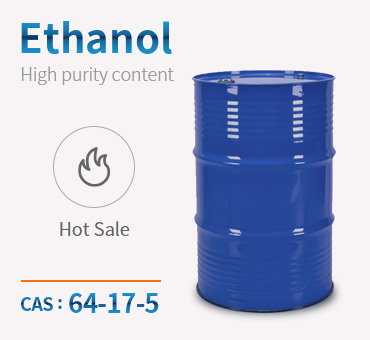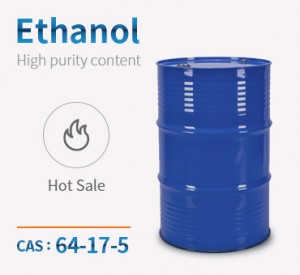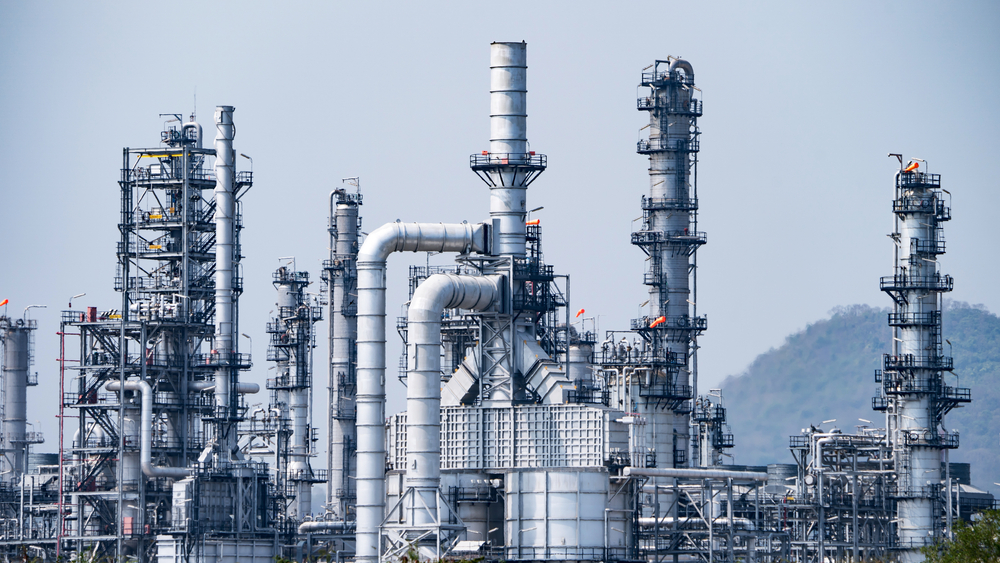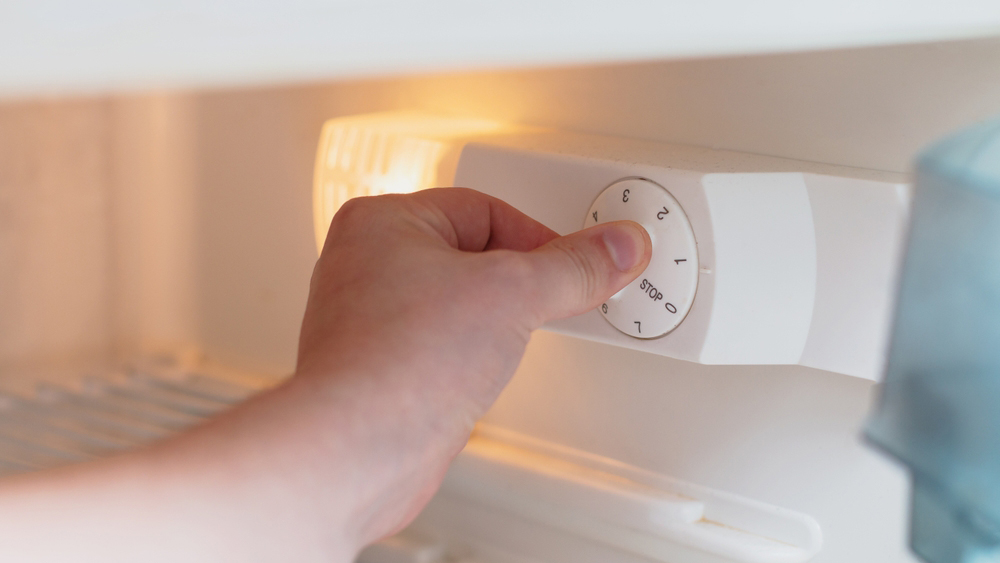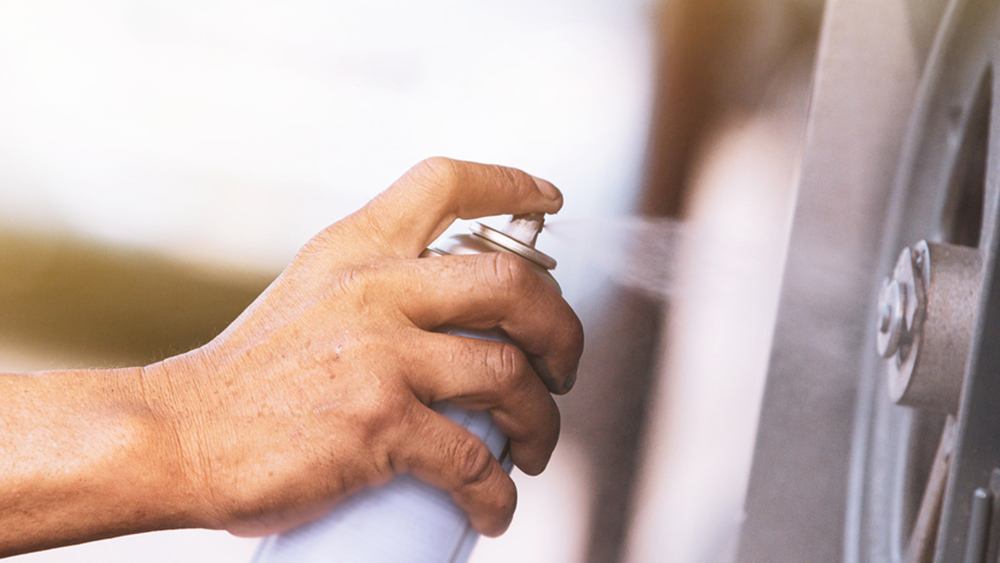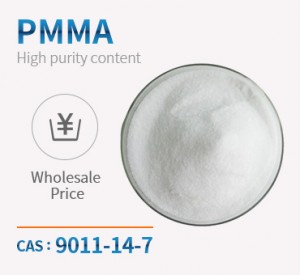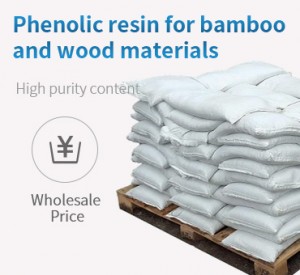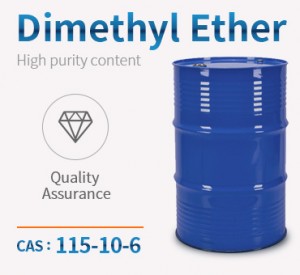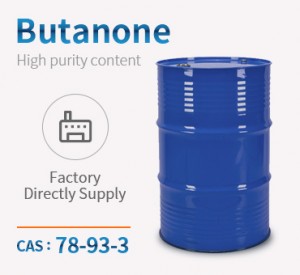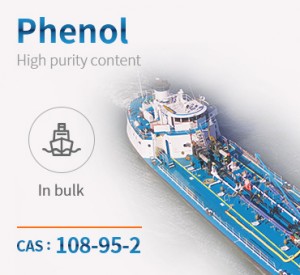Shanghai Huayingtong E-commerce Co., Ltd. is one of the leading Ethanol suppliers in China and a professional Ethanol manufacturer. Welcome to purchaseEthanol from our factory.pls contact tom :service@skychemwin.com
Nazwa produktu:Etanol
Format molekularny:C2H6O
Numer CAS:64-17-5
Struktura molekularna produktu:

Etanol jest dobrze rozpuszczalny w wodzie i rozpuszczalnikach organicznych, ale słabo rozpuszcza się w tłuszczach i olejach. Sam etanol jest dobrym rozpuszczalnikiem, stosowanym w kosmetykach, farbach i nalewkach [2]. Gęstość etanolu w temperaturze 20 °C (68 °F) wynosi 789 g/l. Czysty etanol jest neutralny (pH ~7). Większość napojów alkoholowych ma odczyn mniej lub bardziej kwaśny.
Etanol/alkohol etylowy jest cieczą wysoce łatwopalną, higroskopijną i całkowicie mieszalną z wodą. Etanol jest niekompatybilny z wieloma substancjami chemicznymi, takimi jak silne utleniacze, kwasy, metale alkaliczne, amoniak, hydrazyna, nadtlenki, sód, bezwodniki kwasowe, podchloryn wapnia, chlorek chromylu, nadchloran nitrozylu, pięciofluorek bromu, kwas nadchlorowy, azotan srebra, azotan rtęci(II), tert-butanolan potasu, nadchloran magnezu, chlorki kwasowe, platyna, sześciofluorek uranu, tlenek srebra, siedmiofluorek jodu, bromek acetylu, dwufluorek disulfurylu, chlorek acetylu, kwas nadmanganowy, tlenek rutenu (VIII), nadchloran uranylu i dwutlenek potasu.
Medyczny
Roztwór etanolu o stężeniu 70–85% jest powszechnie stosowany jako środek dezynfekujący i zabija organizmy poprzez denaturację ich białek i rozpuszczanie lipidów. Jest skuteczny przeciwko większości bakterii i grzybów oraz wielu wirusom, ale nieskuteczny wobec zarodników bakterii. Ta dezynfekująca właściwość etanolu jest powodem, dla którego napoje alkoholowe mogą być przechowywane przez długi czas [9]. Etanol ma również wiele zastosowań medycznych i można go znaleźć w produktach takich jak leki, chusteczki medyczne oraz jako środek antyseptyczny w większości antybakteryjnych żeli do dezynfekcji rąk. Etanal może być również stosowany jako odtrutka. Konkurencyjnie blokuje powstawanie toksycznych metabolitów w toksycznym spożyciu alkoholu, ponieważ ma większe powinowactwo do enzymu dehydrogenazy alkoholowej (ADH). Jego głównym zastosowaniem jest spożycie metanolu i glikolu etylenowego. Etanol można podawać doustnie, przez zgłębnik nosowo-żołądkowy lub dożylnie w celu utrzymania stężenia etanolu we krwi na poziomie 100–150 mg/dl (22–33 mol/l).
Paliwo
Etanol jest łatwopalny i spala się czyściej niż wiele innych paliw. Etanol jest stosowany w samochodach od czasu, gdy Henry Ford zaprojektował swój Model T z 1908 roku do zasilania alkoholem. W Brazylii i Stanach Zjednoczonych wykorzystanie etanolu z trzciny cukrowej i zboża jako paliwa samochodowego było promowane przez programy rządowe [11]. Brazylijski program etanolowy rozpoczął się jako sposób na zmniejszenie uzależnienia od importu ropy naftowej, ale wkrótce zdano sobie sprawę, że ma on istotne korzyści środowiskowe i społeczne [12]. Całkowicie spalonymi produktami etanolu są jedynie dwutlenek węgla i woda. Z tego powodu jest on przyjazny dla środowiska i był używany do zasilania autobusów publicznych w USA. Jednak czysty etanol atakuje niektóre materiały gumowe i plastikowe i nie może być stosowany w niezmodyfikowanych silnikach samochodowych.
Paliwo alternatywne na bazie alkoholu, które jest mieszane z benzyną w celu uzyskania paliwa o wyższej liczbie oktanowej i mniejszej emisji szkodliwych substancji niż benzyna bez dodatku alkoholu. Mieszanka zawierająca benzynę z co najmniej 10% etanolu jest znana jako gasohol. Dokładniej, benzyna z 10% zawartością etanolu jest znana jako E10. Inną powszechną odmianą gasoholu jest E15, która zawiera 15% etanolu i 85% benzyny. E15 nadaje się do stosowania tylko w pojazdach typu Flex Fuel lub w bardzo niewielkim procencie najnowszych pojazdów[14]. Ponadto E85 to termin używany dla mieszanki 15% benzyny i 85% etanolu. E85 utrzymuje układ paliwowy w czystości, ponieważ spala się czyściej niż zwykła benzyna lub olej napędowy i nie pozostawia lepkich osadów. Począwszy od roku modelowego 1999, wiele pojazdów w USA zostało wyprodukowanych tak, aby mogły jeździć na paliwie E85 bez modyfikacji. Pojazdy te są często określane jako pojazdy dwupaliwowe lub pojazdy z elastycznym zasilaniem paliwem, ponieważ potrafią automatycznie wykrywać rodzaj paliwa i zmieniać zachowanie silnika, aby kompensować różnice w sposobie spalania paliwa w cylindrach silnika.
Mieszanki etanolu i oleju napędowego zyskują na popularności na całym świecie i są zaprojektowane jako odnawialne, czystsze paliwo alternatywne dla pojazdów terenowych, autobusów, ciężarówek i innych pojazdów napędzanych olejem napędowym. Dodatek etanolu i innych dodatków do oleju napędowego eliminuje charakterystyczny czarny dym, a emisja cząstek stałych, tlenku węgla i tlenków azotu ulega znacznemu zmniejszeniu. Etanol może być również stosowany do gotowania jako zamiennik drewna, węgla drzewnego, propanu lub jako paliwo do oświetlenia, takie jak nafta.
Brazylia i Stany Zjednoczone przodują w przemysłowej produkcji paliwa etanolowego, odpowiadając łącznie za 89% światowej produkcji w 2008 roku. W porównaniu z USA i Brazylią, produkcja etanolu w Europie jest nadal bardzo skromna. Brazylia jest drugim co do wielkości producentem etanolu na świecie i największym eksporterem.
Napój
Znaczne ilości etanolu są produkowane z surowców rolniczych na potrzeby przemysłu napojowego i przemysłowego. Etanol produkowany dla tych branż różni się od etanolu przeznaczonego na paliwo jedynie mocą, która może wahać się od 96% do 99,9%, oraz czystością, w zależności od przeznaczenia. Przemysł napojowy jest prawdopodobnie najbardziej znanym odbiorcą etanolu. Jest on wykorzystywany do produkcji wielu rodzajów napojów spirytusowych, takich jak wódka, gin i anyżówka. Etanol stosowany w produkcji napojów spirytusowych wymaga stosowania wysokich standardów i procesów.
Inni
Etanol używany jako półprodukt w przemyśle chemicznym, farmaceutycznym i kosmetycznym jest w wielu przypadkach najwyższej i najczystszej możliwej jakości. Są to rynki premium ze względu na dodatkowe etapy procesu produkcji alkoholu, niezbędne do osiągnięcia wymaganej czystości. Te same wysokie standardy i wymagania dotyczące czystości obowiązują w przemyśle spożywczym, takim jak ekstrakcja i zagęszczanie aromatów i aromatów, a także w farbach i termometrach. Etanol może być stosowany w odmrażaczach i płynach przeciw zamarzaniu do czyszczenia szyb samochodowych. Jest również składnikiem perfum, dezodorantów i innych kosmetyków.
Chemwin może dostarczyć szeroką gamę węglowodorów hurtowych i rozpuszczalników chemicznych dla klientów przemysłowych.Przedtem prosimy o zapoznanie się z poniższymi podstawowymi informacjami dotyczącymi współpracy z nami:
1. Bezpieczeństwo
Bezpieczeństwo jest naszym priorytetem. Oprócz dostarczania klientom informacji o bezpiecznym i ekologicznym użytkowaniu naszych produktów, dokładamy również wszelkich starań, aby zminimalizować ryzyko dla bezpieczeństwa pracowników i kontrahentów. Dlatego wymagamy od klienta upewnienia się, że przed dostawą spełnione są odpowiednie standardy bezpieczeństwa rozładunku i składowania (prosimy o zapoznanie się z załącznikiem HSSE do ogólnych warunków sprzedaży poniżej). Nasi eksperci HSSE służą pomocą w zakresie tych standardów.
2. Sposób dostawy
Klienci mogą zamawiać i dostarczać produkty z Chemwin lub odbierać je z naszego zakładu produkcyjnego. Dostępne środki transportu to transport drogowy, kolejowy lub multimodalny (obowiązują odrębne warunki).
W przypadku wymagań klienta możemy określić wymagania dotyczące barek lub tankowców i zastosować specjalne normy i wymagania bezpieczeństwa/kontroli.
3. Minimalna ilość zamówienia
Jeśli dokonujesz zakupu produktów na naszej stronie internetowej, minimalna ilość zamówienia wynosi 30 ton.
4.Płatność
Standardową metodą płatności jest bezpośrednie potrącenie kwoty za fakturę w terminie 30 dni.
5. Dokumentacja dostawy
Do każdej dostawy dołączone są następujące dokumenty:
· Konosament, list przewozowy CMR lub inny odpowiedni dokument transportowy
· Certyfikat analizy lub zgodności (jeśli wymagany)
· Dokumentacja związana z HSSE zgodna z przepisami
· Dokumentacja celna zgodna z przepisami (jeśli wymagana)
Kategorie produktów
-

Telefon
-

E-mail
-

WhatsApp
-

Szczyt

